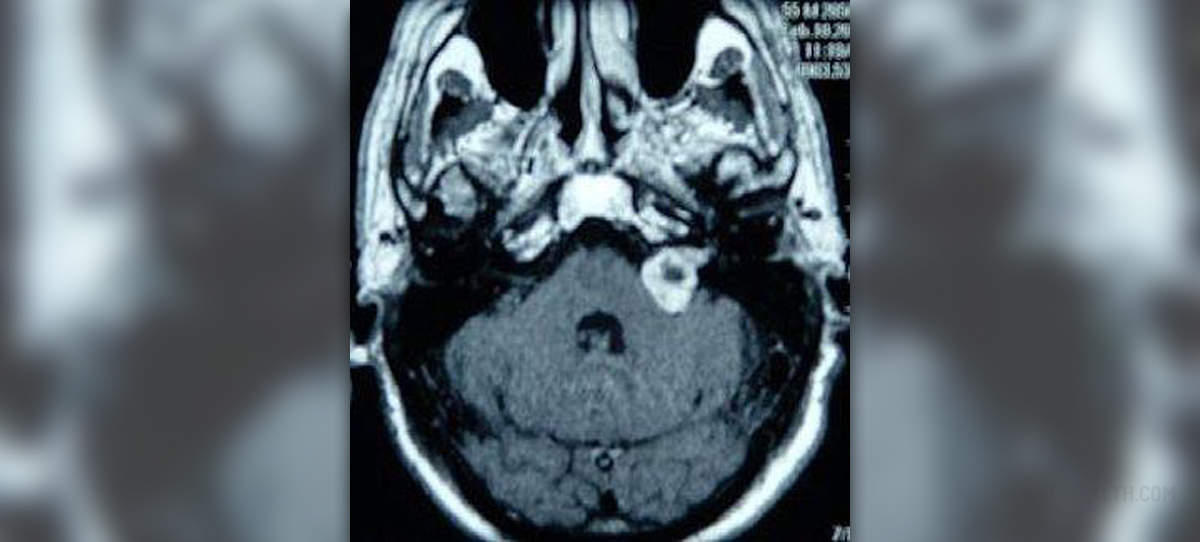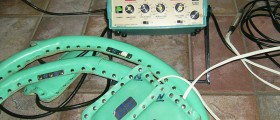
Acoustic Neuroma: A Benign Brain Tumor
An acoustic neuroma is a benign tumor arising from the Schwann cells of the vestibular portion of the eighth cranial nerve — cells that play a role in maintaining balance and hearing. This is why the tumor is often referred to as vestibular schwannoma. Because an acoustic neuroma affects the nerve in charge of hearing and balance, many patients who live with these tumors complain about hearing and balance problems.
What is more, the affected nerve runs quite close to the facial nerve, another cranial nerve whose function is to control movement of the facial muscles. The facial nerve is also essential for facial skin sensation. So, additional symptomatic problems these patients may eventually develop are connected with facial expression and abnormal function of facial muscles or a change in sensation, such as numbness.
As a benign tumor, acoustic neuroma grows slowly, and as such, symptoms also develop gradually. According to available data, each year 20 out of a million individuals are confirmed to have this type of brain tumor. Women and people between 40 and 60 years of age seem to be affected more often.
Fortunately, the tumor does not expand rapidly and since it is benign in nature it never leads to metastases the way a cancerous tumor would. However, the fact that this tumor is benign does not mean it is not dangerous. Symptoms may become intolerable and start interfering in every day activities. Once this occurs, doctors can choose between two treatment modalities, surgery to remove the tumor or radiation therapy which destroys the tumor cells and helps the tumor to reduce in size.
Preparation for Acoustic Neuroma Surgery
Before doctors decide to perform surgery, they need to be sure that patients actually suffer from symptoms that really cannot be controlled in any other way — in other words, that the benefits of brain surgery outweigh the considerable risks. A patient's medical team will perform a neurological exam, hearing tests (auditory brainstem response, pure tone audiometry test as well as speech recognition audiometry test) and an MRI of the head. Magnetic resonance imaging efficiently visualizes the tumor, gives insight in its relation towards the nearby structures which is of utmost importance for each and every surgeon.
The surgery is in the form of an inpatient procedure, meaning that patients will remain hospitalized for some time after tumor removal. They are all given instructions of how to behave and prepare themselves for the surgery in the best possible way. Patients are supposed to report all medications and supplements they are currently taking and inform their doctors about allergies they might be suffering from.
Food or fluids of any kind are strictly forbidden for at least 8 hours before the surgery. Peripheral intravenous access allows easier administration of drugs and fluids. It remains even after the surgery until patients become strong enough to eat and take medications orally.
And finally, patients get familiar with the very surgery, what is going to be done and what they can expect. They also need to know everything there is about potential complications.
Surgery for Acoustic Neuroma
The goal of the most common treatment approach in patients suffering from acoustic neuroma, surgery, is to remove the tumor from the body while at the same time preserve hearing — that is, to avoid jeopardizing hearing or precipitating hearing loss. Still, hearing preservation is only possible in the case of small acoustic neuromas. Surgical removal of large tumors is associated with either complete or partial hearing loss.
The mostly used approach to the removal of acoustic neuroma is so called microsurgery. It is performed under general anesthesia and the tumor is removed via a small incision made in the skull. Sometimes the tumor is localized in such way that it can be completely removed. On the other hand, surgeons may not be capable of removing the entire tumor, and are then forced to leave some of it behind to avoid damaging the patient's quality of life. Surgeons leave parts of the tumor in an attempt to prevent complete hearing loss or balance problems. In this case patients, may additionally benefit from postoperative radiation surgery that efficiently deals with the remnant of the acoustic neuroma. Damage to the facial nerves is one of several potential complications of the surgery. It may be in the form of speech problems, problems swallowing or most commonly facial paralysis.
Today, acoustic neuroma may be successfully dealt with a newer type of treatment called stereotactic radiosurgery. The approach includes the administration of a very precise but sufficiently high dose of radiation which destroys the tumor, sparing all the nearby tissues. The tumor may receive a single dose of radiation, but radiotherapy could also be done over the course of several sessions. Unlike standard surgery, stereotactic radiosurgery requires only local anesthesia. As for side effects, these include nausea, neck stiffness and sometimes damage to the facial nerve, resulting in facial numbness or facial paralysis. Hearing loss is another potential complication.
When it comes to recovery after acoustic neuroma surgery, most patients are discharged 4-5 days after standard surgical procedure. All expected side effects such as headache are easily brought under control with medications.
Patients may return to work after several months. Still, the complete recovery takes time. Some complications such as facial numbness may improve only after a year and a half. The recovery also depends on whether patients had some deficits prior to the procedure. Also, if some functions have been completely lost before surgery they will definitely not be restored afterwards.

















Your thoughts on this
Loading...